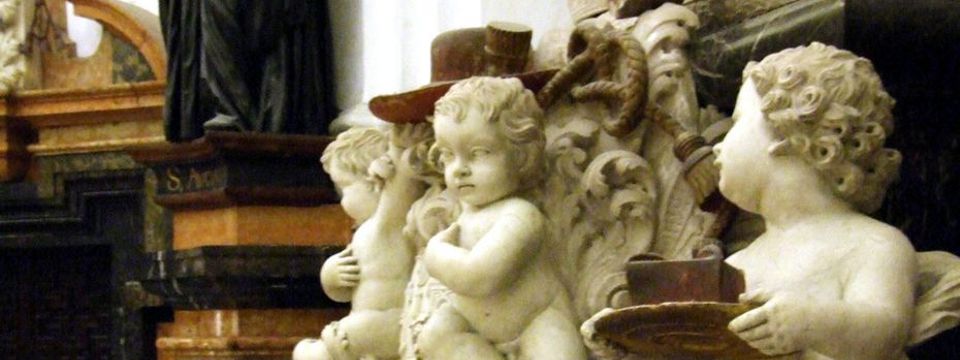
Кордоба, разCordoba, one
После конференции EPF2011 в Гранаде, решил посмотреть что-нибудь новенькое для себя и заехал на выходные в Кордобу, чей центр внесён в список всемирного наследия ЮНЕСКО. Добираться из Гранады в Кордобу удобнее всего оказалось на автобусе, чьё расписание можно посмотреть на www.alsa.es. Поселился в относительно дешёвом и приятном отеле Riviera, очень удобно расположенным между автобусной и железнодорожной станциями с одной стороны, и историческим центром с другой: и туда и туда легко дойти пешком. Последнее оказалось немаловажно, поскольку в Кордобе жара днём была под 40 градусов, к полуночи температура опускалась всего до 30, поэтому долго ходить было весьма неприятно :)
В общем, из-за жары, выжигающей улицы, и уже относительно позднего часа (около шести уже было), решил вечером лишь немного прогуляться по центру до главной достопримечательности города, Мескиты, попробовать в неё попасть, и затем поужинать и отправиться отдыхать. Компанию мне составила аргентинка Белен, путешествующая в Гранаду проездом через Кородобу, с которой я познакомился на рецепшене отеля.
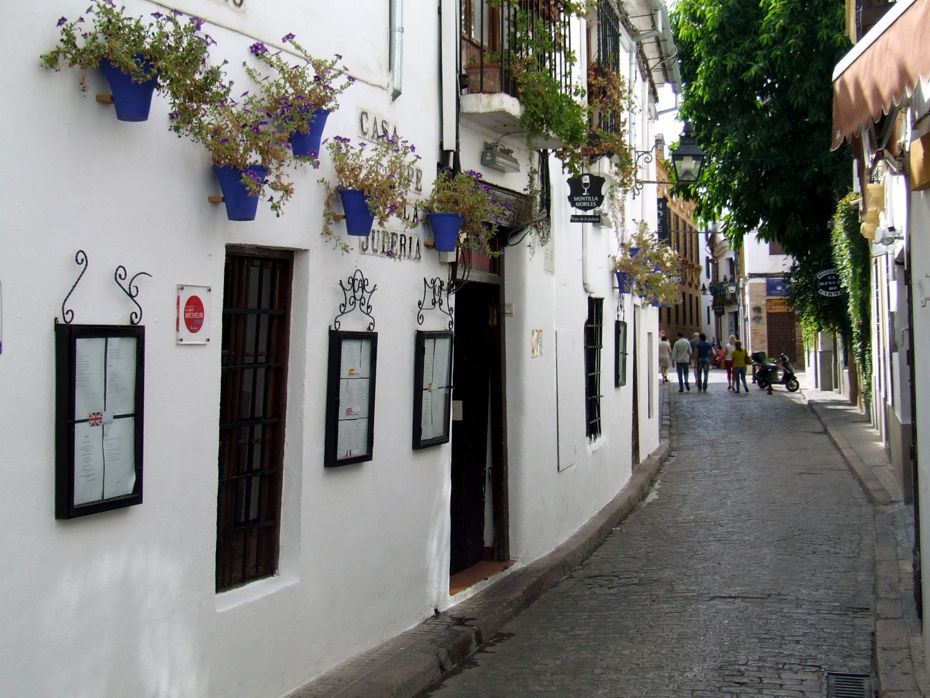
К сожалению, фотографии не передают стоящей на улице жары :)
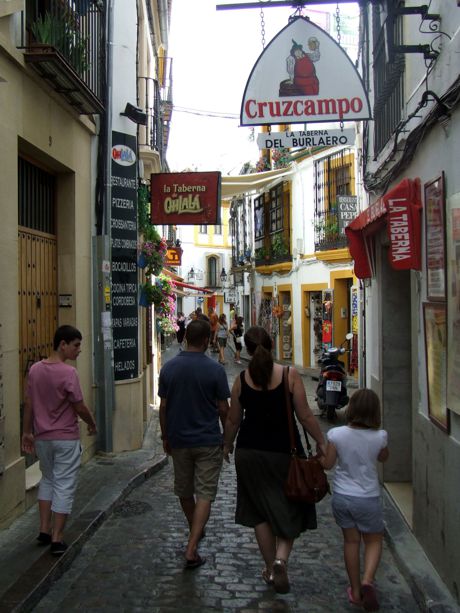
Узкие улочки в центре заполнены сувенирными магазинчиками и ресторанчиками.

Колокольня Мескиты.
Кордоба долгое время была важным оплотом мавров на юге Испании. Когда их в тринадцатом веке оттуда выбили христиане, главную мечеть города решили не разрушать, лишь немного облагородить. То что получилось называют Мескитой (исп.: Mezquita-Catedral, т.е. Мечеть-Собор).
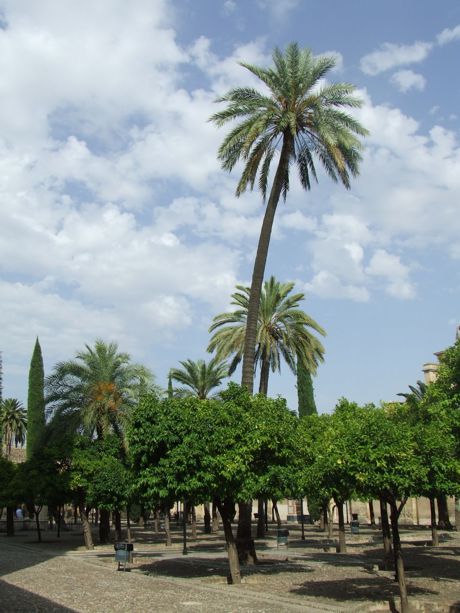
Во дворе Мескиты растут пальмы.
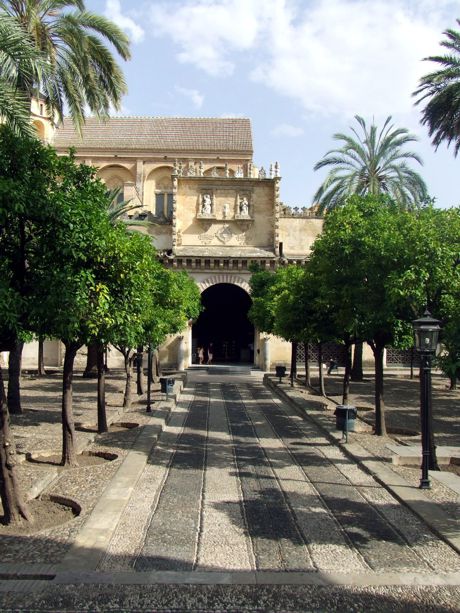
А это вход внутрь самого здания.
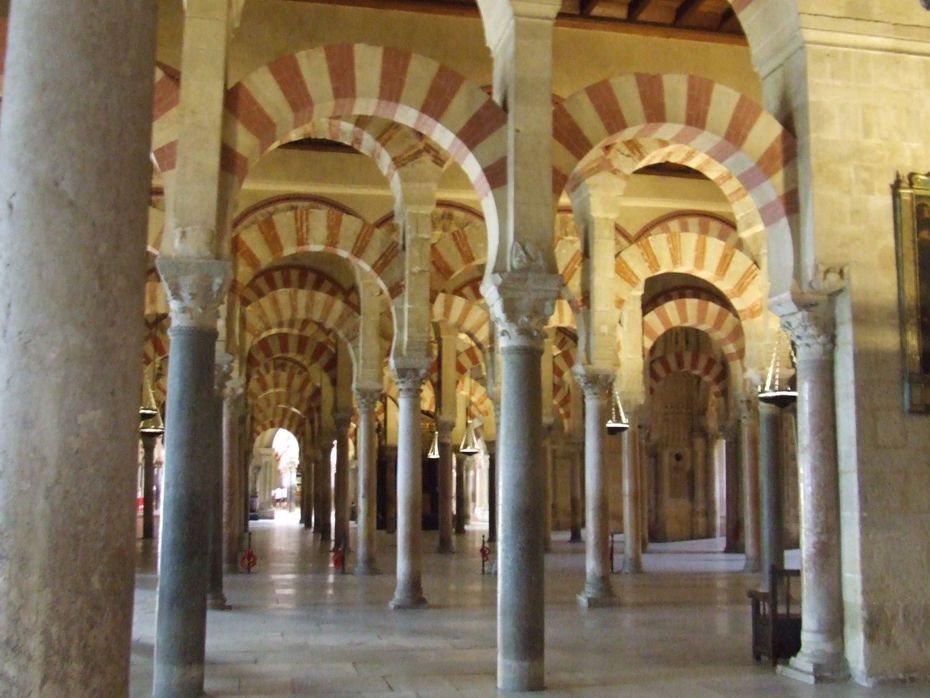
Отличительная черта собора это вот эти арки внутри.
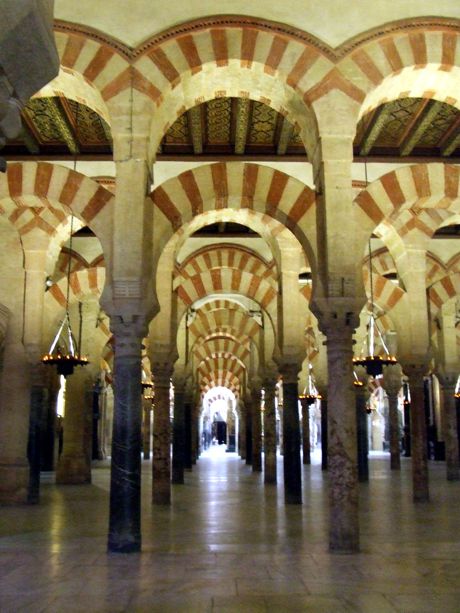
Арабские арки оставили нетронутыми.
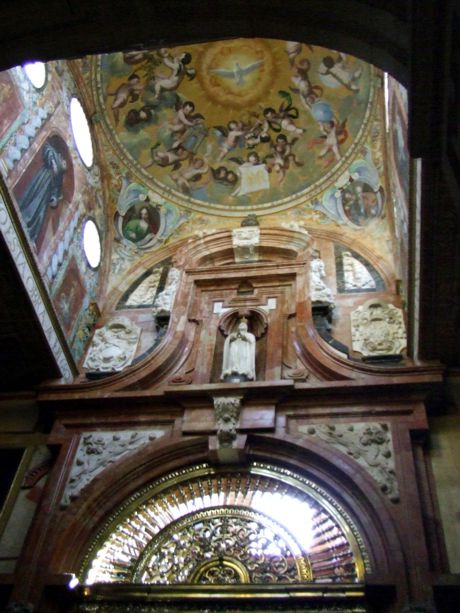
Но местами на стенах и куполах
нарисовали христианские фрески.
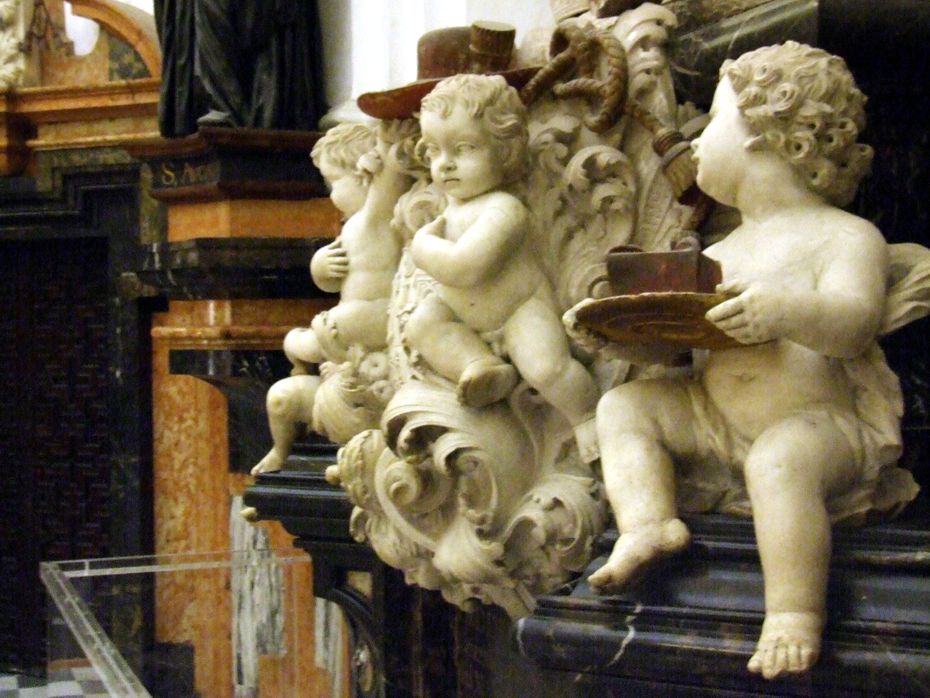


Слепки меток каменотёсов на блоках собора. Метки ставились на вырезанные блоки,
чтобы потом посчитать кому сколько надо платить.

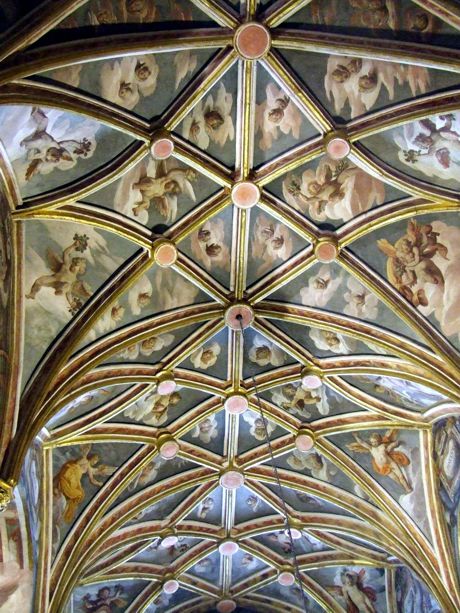


Собственно больше всего на христианский храм похожа только самая маленькая центральная часть здания.
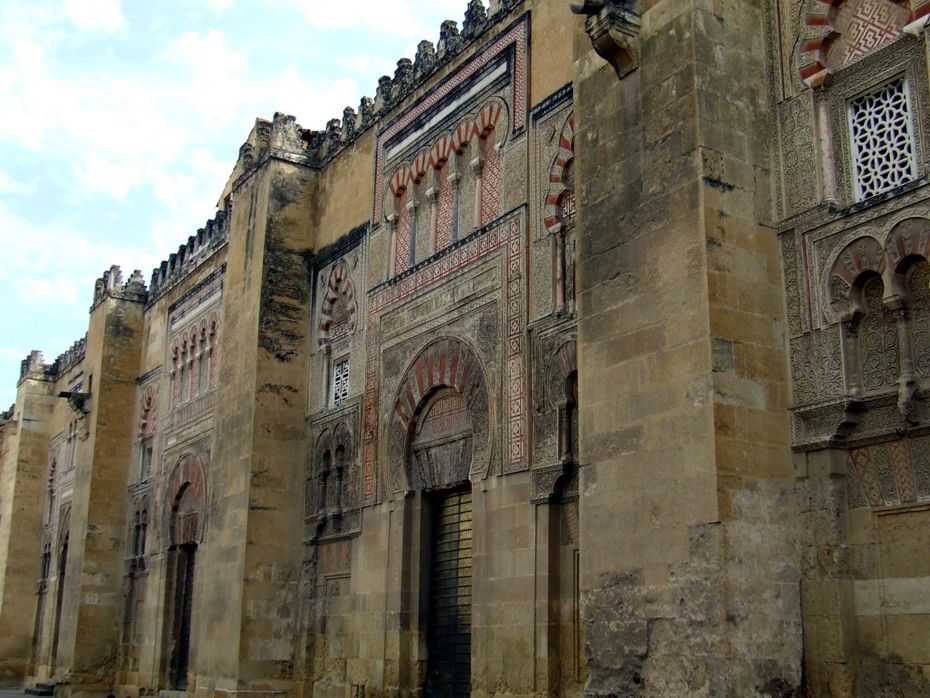
Снаружи храм выглядит местами побитым временем.
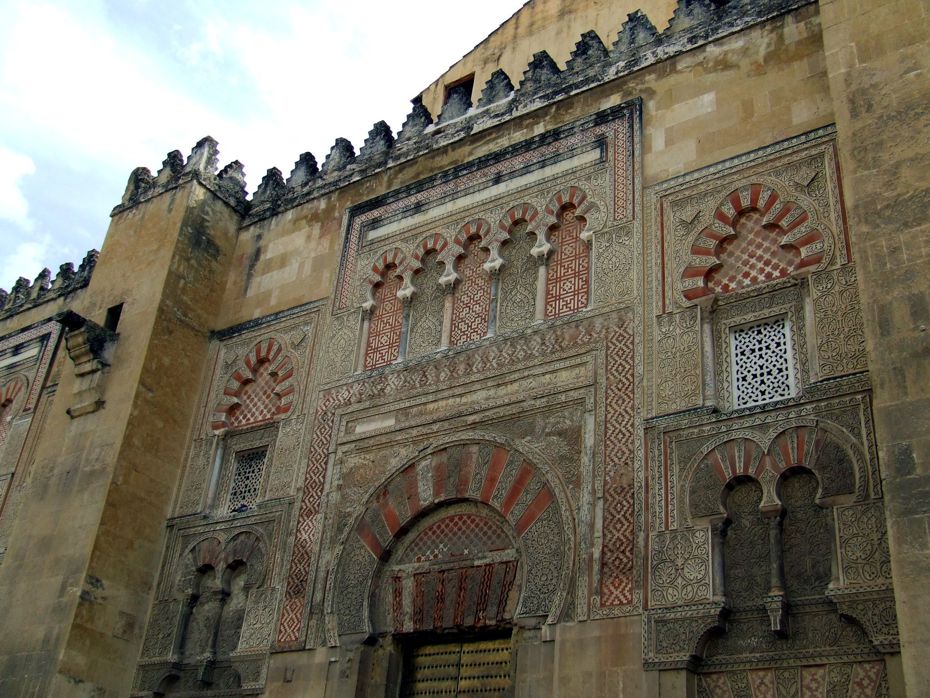
Зато местами сохранились красивые арабские узоры.
Вот, кстати, пара фоток моей спутницы Белен:
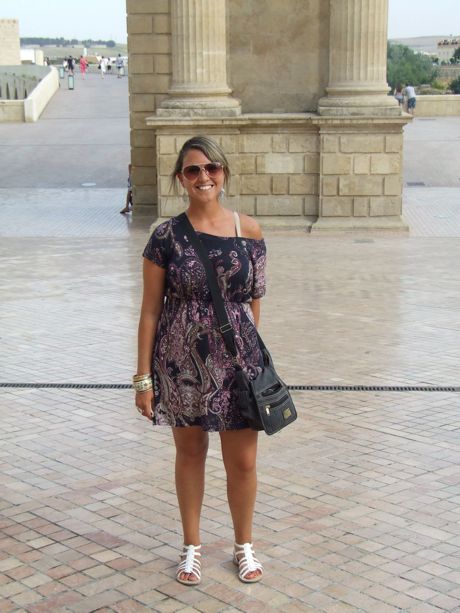

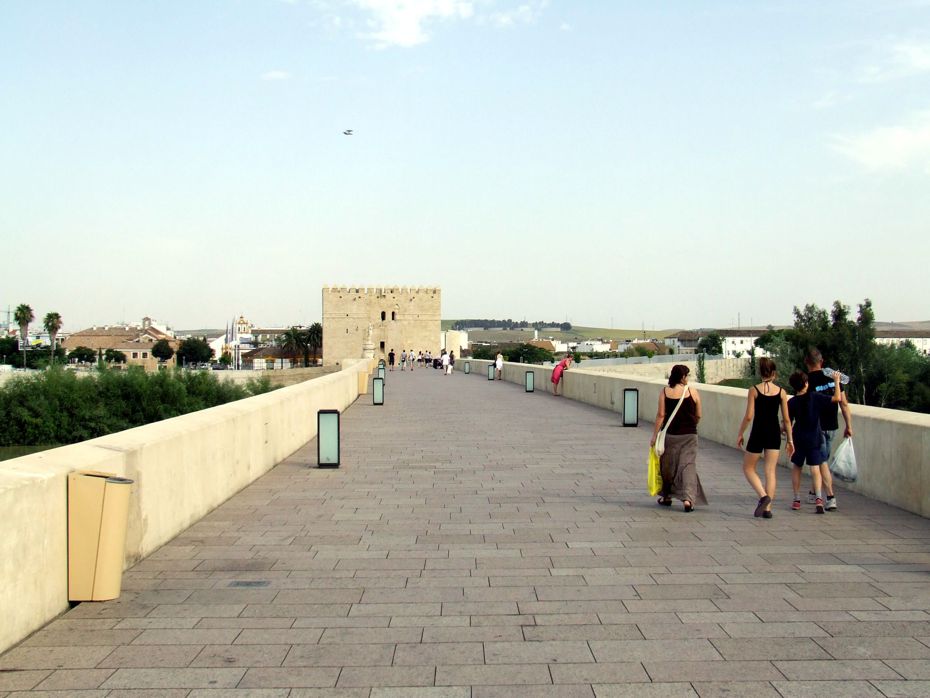
Римский мост через реку Гвадалкивир позади Мескиты.
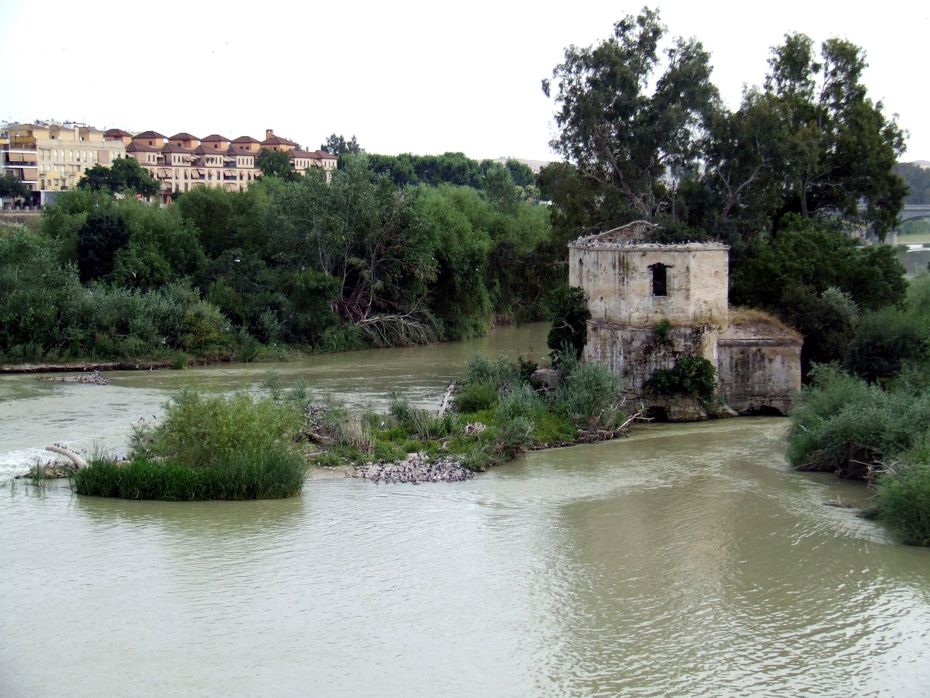
Руины посреди реки — бывшие водяные мельницы.
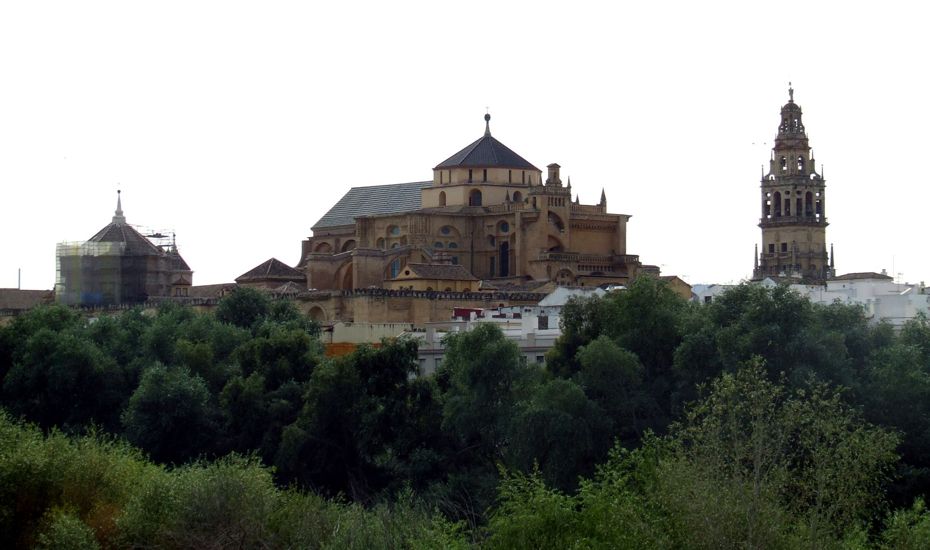
Вид на Мескиту с противоположного берега реки.
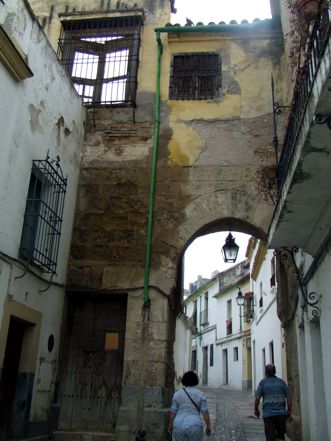
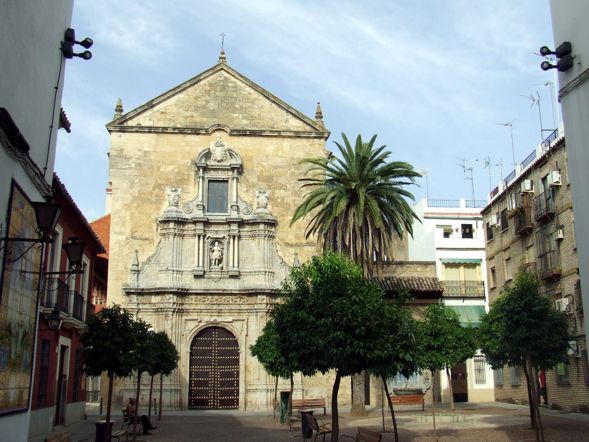
На этом, собственно, первый день осмотра города и закончился: после весьма короткой прогулки мы уже были насквозь мокрые от пота, поэтому вернулись до отеля, принять душ, дошли до какого-то ресторанчика перекусить, после чего отправились отдыхать: Белен рано утром собиралась ехать дальше в Гранаду, а у меня были наполеоновские планы по дальнейшему осмотру города.
Продолжение: Кордоба, два

Кордоба, разCordoba, one
After the EPF2011 conference in Granada, I decided to see something new for me, so I went for a weekend to Cordoba, which center is listed in the World Heritage List of UNESCO. The best way to get from Granada to Cordoba was to take a bus, which schedule could be found at the www.alsa.es. To stay I chose nice and relatively cheap hotel Riviera, which is extremely good situated between the bus and train stations at one side, and the old city center at the other side. So it was possible to walk to those places easily, which was quite important, because it was very hot: about 40 degrees during the whole day, even at the midnight it was still 30 degrees hot. So long walks were hard and challenging :)
So, due to the heat, burning the streets, and relatively late hour (it was about six already), I decided just to have a short walk around the center in direction of the main city site, Mezquita, try to get inside, and then just to have a dinner and have rest. For the walk I was accompanied by a girl Belen from Argentina, who was traveling to Granada through Cordoba, and who I had met by a chance at the hotel reception.

Unfortunately, the pictures don’t really show you the heat at the streets :)

Narrow streets of center are full of souvenirs shops and restaurants.

Bell-tower of Mezquita.
Cordoba for a long time was an important stronghold of Moors at the south of Spain. When in XIII century they were kicked out of there by Cristians, the winners decided not to demolish the main mosque of the city, just to redecorate it a bit. The results is called now Mezquita-Cathedral, which means the Mosque – Cathedral.

Palms are growing in the inner yard of the Mezquita.

This is the entrance inside the building intself.

The most known feature of the Mezquita are this arks inside it.

Arabic arks were left as they were.

But the walls and domes were partially painted with Cristian drawings.



Copies of the stonemasons marks at the Cathedral’s blocks. They were used to count productivity and, hence, salaries of different masters.




In fact, only a small central part of the big Mezquita hall looks like a Cristian church.

From outside the temple looks a bit damaged by time in some places.

But at others places it conserves nice Arabic patterns at its walls.
By the way, here are few pics of my companion in this walk, Belen:



Roman bridge over the Guadalquivir river just behind the Mezquita.

Ruins at the middle of the river used to be water-mills.

View to the Mezquia from the opposite bank of the river.


Actually, the first walk around the city ended up at this place: after a short walk we were quite tired and sweat already, so we came back to the hotel to take a shower, then went to a restaurant to have dinner, and then went to rest: Belen was going to continue her trip to Granada early in the morning, and I had a lot of plans about exploring Cordoba during the next day.

Pingback: Кордоба, два | Гнездо Хищной Птицы
Pingback: Кордоба, четыре | Гнездо Хищной Птицы
Pingback: С новым годом! | Гнездо Хищной Птицы
Pingback: Юг, два | Гнездо Хищной Птицы
Pingback: Площадь Испании, раз | Гнездо Хищной Птицы
Pingback: Андалусия в заброшенной миниатюре | Гнездо Хищной Птицы